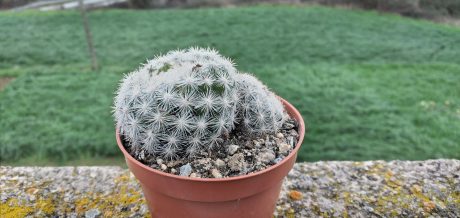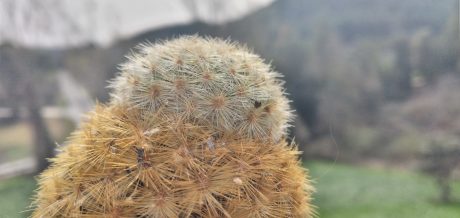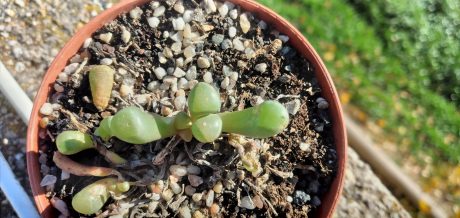Today I present one of my favorite cactuses and consider it to be one of the most curious ones I have seen for the form it takes and the little that is known about it. This is Mammillaria Candida. It is known by the scientific synonym Mammilloydia Candida, but with this name it is registered in a separate genus. It is also known by the common name Bisnaga Snowball. It comes from northeastern and central Mexico.
When it’s small it is a perfect round and white ball (although its body is actually blue-green). I say it’s white because its spikes, over time, become more tussocks (for those who don’t know what it means: this word refers to spines growing in the form of a very thick kill) earning the name snowball, because if you look at it well, it is what it remembers.
Overall, each aircrew (group where the spines are joined) has between thirty and fifty incredibly small radial spines (about five millimeters) followed by a dozen white or pink power plants that are usually more rigid.
As for flowering, it occurs in the spring by offering pink flowers or a mixture of cream and a line of red in the middle in the shape of a crown that still favors this already curious cactus. It needs to be in full sun and enjoy high temperatures. In winter, it is best not to expose it to temperatures below five degrees positive.
Finally, it should not be irrigated much (it is one of the species of Mammillaria that needs less water, hence the excess water and ambient humidity must be taken into account, as this may cause its death). This means that in spring and summer they should be irrigated little whenever the substrate is dry. In mid-autumn, stop irrigating until the following spring.









Reviews
There are no reviews yet.